What Kind Of Animals Have A Hard Shell What Kind Of Animals Have Exoskeletons
The exoskeleton is a protective system for animals. The layman often refers to the exoskeleton as a vanquish. The exoskeleton provides articulation flexibility for underlying muscles. The articulation and muscle function allows a range of movement for the animal. In that location are a variety of insects, crustaceans, and mollusks with exoskeletons.
Exoskeleton vs. Endoskeleton
Both the exoskeleton and endoskeleton are os structures that grow with the torso. Endoskeletons are on the inside of an fauna. Mammals have endoskeletons.
An exoskeleton develops around the animal'south external frame. For invertebrates, the trounce consists of proteins, minerals, and carbohydrates. The exoskeleton of mollusks is a calcium carbonate shell.
With the endoskeleton, the skeleton provides support that allows the trunk to concur weight and promote movement. The skeleton promotes motion with the bony surfaces attached to muscles. Vertebrates carry skeletal muscles that attach tendons to bones.
The exoskeleton supports internal organs and tissue. The exoskeleton can be flexible as it's not as solid as the endoskeleton. But, dissimilar the endoskeleton, the exoskeleton limits how large the animal will abound.
The shell is often lite in weight which encourages motion. Arthropods have soft membranes in the joints. The utility lets the animal flex its appendages.
Animals With Exoskeletons
Anthropods make upward about three-quarters of the globe'southward creatures and entail the majority of animals with exoskeletons. Many are insects. The phylum has centipedes, spiders, and crustaceans. Some sea sponges secrete exoskeletons. There are besides mollusks with exoskeletons.
one. Crustaceans
The crustacean belongs to the arthropod group. They alive mainly in oceans. You tin likewise institute them in freshwater.
Kokosnoot Crab
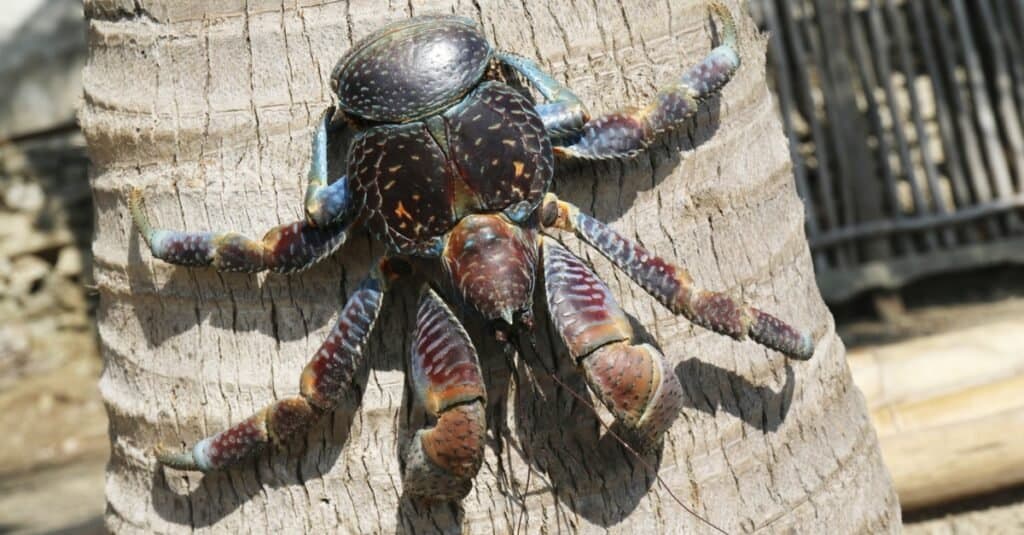
KYTan/Shutterstock.com
Coconut crabs actually climb coconut trees. Coconut crabs so utilise their powerful claws to crevice open up a coconut to grub on the innards. Their pinchers can snap a finger off a hand. Coconut crabs molt their exoskeleton and eat them.
European Lobster

davemhuntphotography/Shutterstock.com
The European lobster tin can alive up to a century and will keep to grow the unabridged time. In its start five to 7 years, the lobsters molt their exoskeleton somewhere around two dozen times. Later on, the adult lobster only molts no more than twice a twelvemonth.
Crayfish
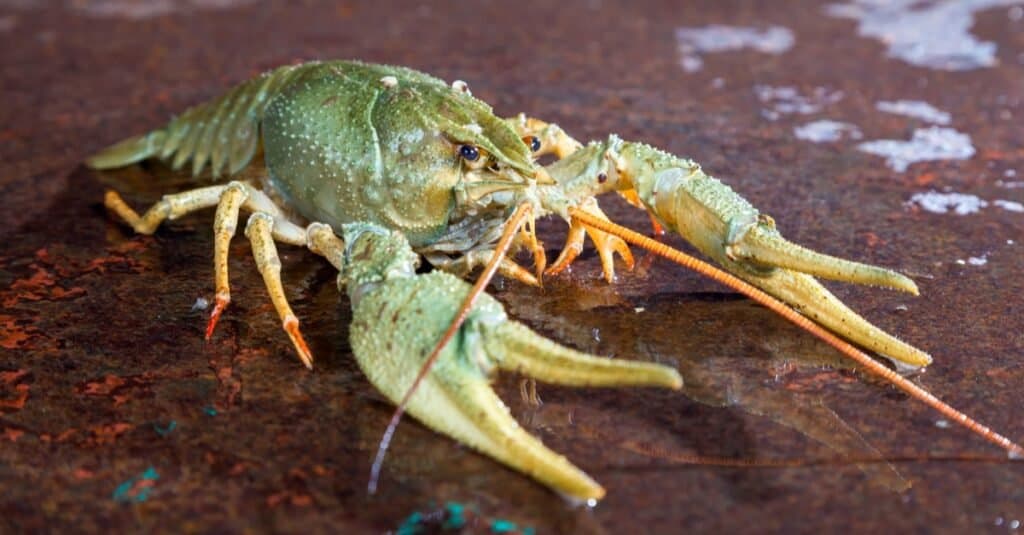
Sergey Lavrentev/Shutterstock.com
Too known equally crawdads, the crayfish is something of a mini lobster. They're constitute in rivers, streams, creeks, and other bodies of fresh water. In social club to abound, they molt their exoskeletons.
2. Insects
The largest grouping of arthropods on earth, insects have hard exoskeletons. Fabricated of chitin, the skeleton supports and protects bodies comprised of a caput, thorax, and abdomen.
Grasshopper
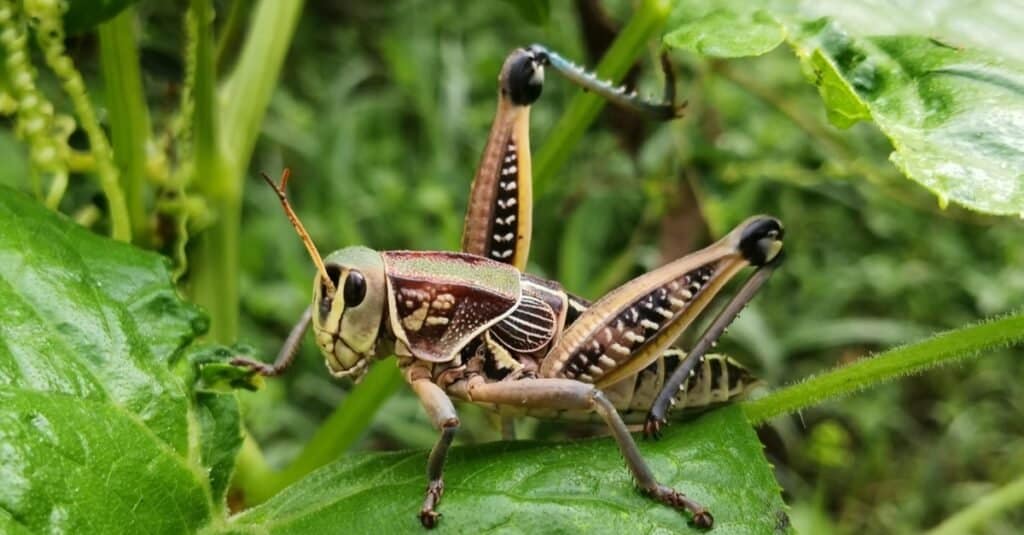
NEFS/Shutterstock.com
Grasshoppers accept difficult exoskeletons to protect sensitive internal organs. Their large back legs let them jump meaning distances. Some species of grasshopper can wing.
Cicada
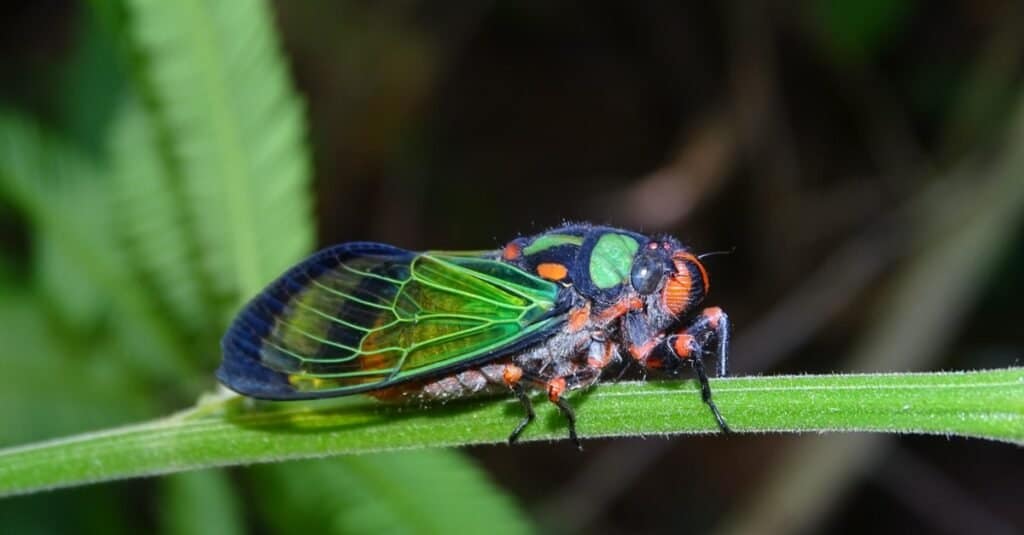
Marcos Cesar Campis/Shutterstock.com
The cicada volition live beneath the surface for upwards to the first 17 years of its life. In one case it surfaces, the creature goes on a mission to shed its exoskeleton. Once they molt away the trounce, they become adults and are now called nymphs. The exoskeleton remains attached to the tree they used to lose the external skeleton.
Ladybug

A ladybug's exoskeleton is a bright red with black dots. Their main part is safeguarding the creature's wings. The wings are usually iv times the size of the insect's torso. The exoskeleton likewise holds the ladybug's body together pretty much the same style an endoskeleton functions with mammals.
3. Arachnids
Belonging to the arthropod grouping, the spider family is kin to mites, ticks, chiggers, and scorpions. They all accept exoskeletons over a two-part body. That's the abdomen and cephalothorax. Different an insect, the spider has no antennae. They all walk on viii legs.
Brown Recluse

Physics_joe/Shutterstock.com
The proper name comes from the brown recluse'due south leaning toward solitude. They are identifiable via a marking that's violin-shaped at the pinnacle of its exoskeleton. The brown recluse bites only, is non-venomous, and their teeth are so small they don't go through clothing.
Black Widow
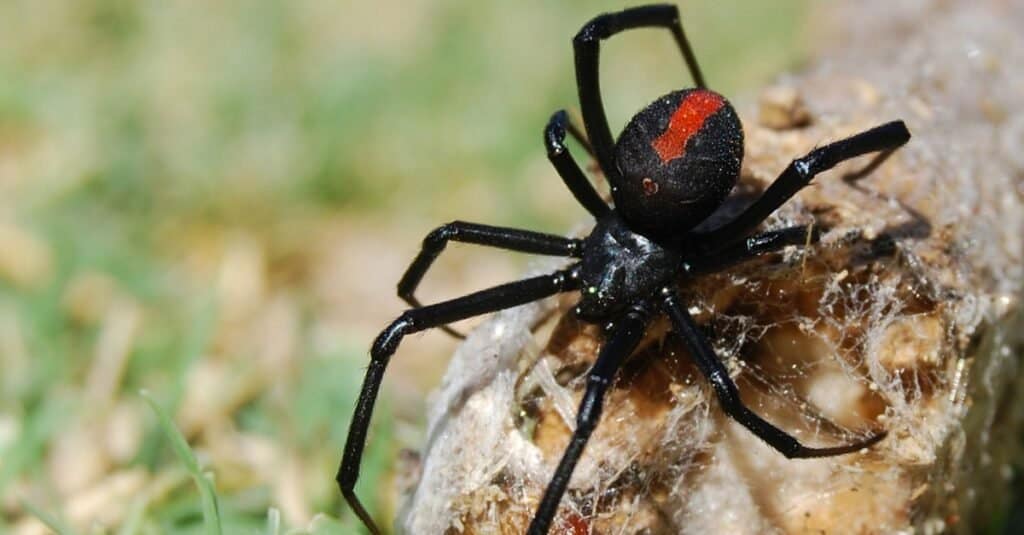
iStock.com/maria72
One of the most lethal spiders in the earth, black widows are infamous for consuming their mates subsequently successful mating. Both males and females have tough exoskeletons consisting of chitin and protein.
Emperor Scorpion
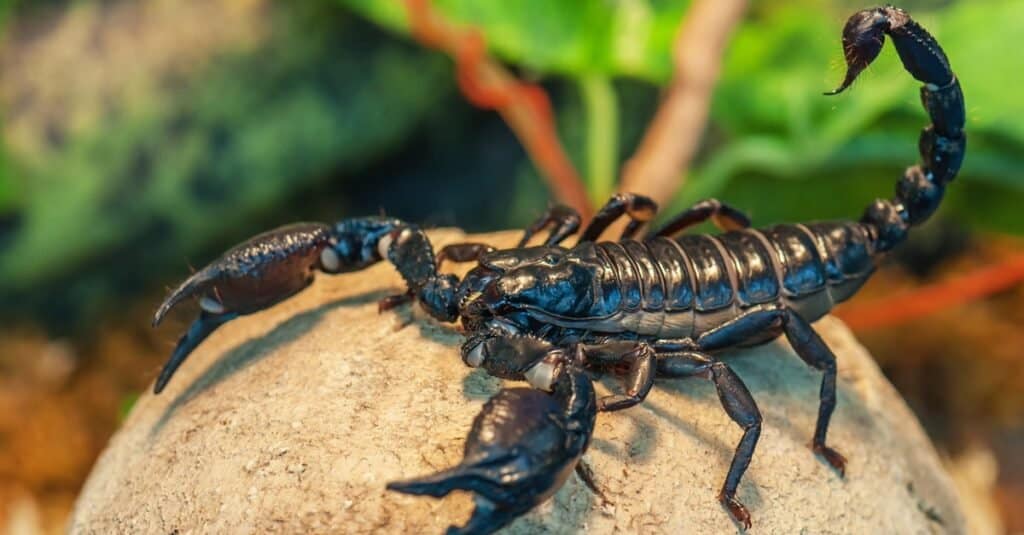
Vova Shevchuk/Shutterstock.com
The emperor scorpion uses its rugged shell equally an advantage to protect itself from predators. The scorpion has seriously intimidating stingers but relies more than on its claws. Its sting is comparable to a bee sting, not especially painful considering the stinger'southward size.
4. Mollusks
Shelled mollusks fall into 2 groups: cephalopods and gastropods. Both groups have difficult shell exoskeletons. The reward of the shells is they serve as both protection and home. The exoskeleton is by and large made of calcium.
Snails
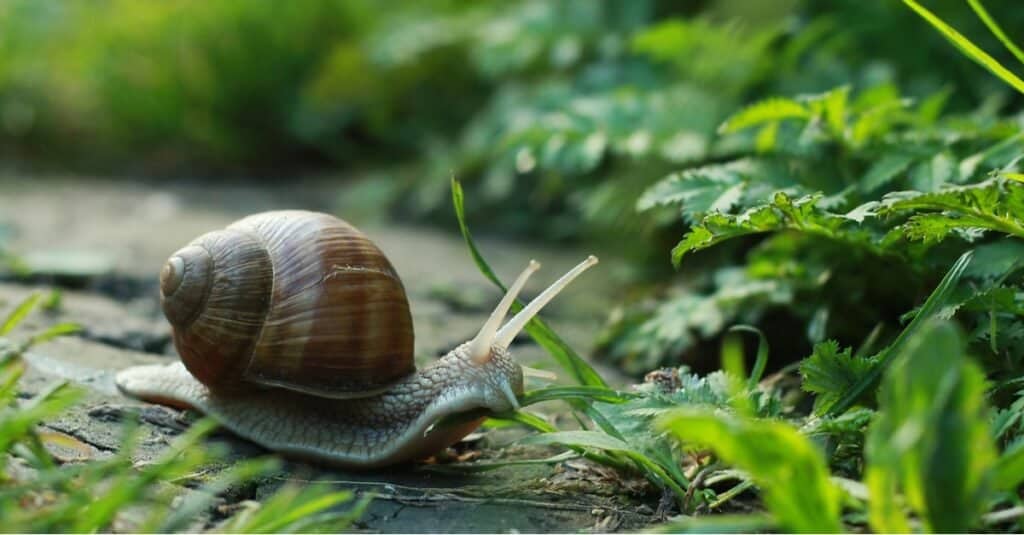
Zuzha/Shutterstock.com
All forms of snails — from giant ocean snails to garden versions — have an exoskeleton. Like all snails, the shells are a master defence. They also act every bit a home. Creatures tin can get into the beat like a turtle and close upwards. Different many creatures with an exoskeleton, the snail shell grows with the animal.
Oysters and Clams

wasanajai/Shutterstock.com
Many shelled animals are soft-skinned and the exoskeleton is the first line of defense for keeping them prophylactic. We may only come across clams and oysters every bit oily fiddling slimers, just their systems actually consist of a heart, oral cavity, stomach, and nervous systems.
v. Centipedes and Millipedes
Getting the millipede and centipede confused isn't uncommon. They are actually very different. What offset distinguishes them is centipedes have one pair of legs per segment. The centipede only has ane. Some other major distinction is centipedes are venomous — some lethal — and millipedes are not.
Millipedes
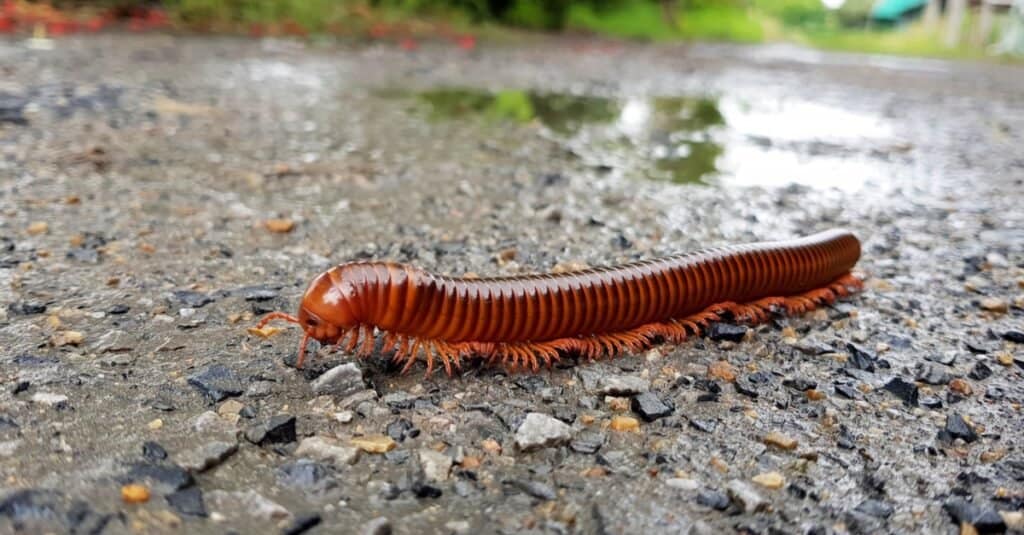
Sawangkaew/Shutterstock.com
The exoskeleton on the millipede is its strongest defense from anything that would gladly consume it. When threatened, the insect balls into a coil. The action makes them less alluring and reinforces the advantages of the crush's ability to safeguard their vulnerable underside.
Centipedes

frank60/Shutterstock.com
Centipedes accept the same protective casing as the millipede. The centipede has a venom it uses to kill its prey. The venom isn't really fatal to humans though sure species — remember the Asian Forest Centipede — tin can cause painful swelling. Typically though, the creatures avoid humans.
Adjacent Up: What Practice Lizards Eat?
Source: https://a-z-animals.com/blog/the-top-5-groups-of-animals-with-exoskeletons/
Posted by: bradleypand1956.blogspot.com

0 Response to "What Kind Of Animals Have A Hard Shell What Kind Of Animals Have Exoskeletons"
Post a Comment